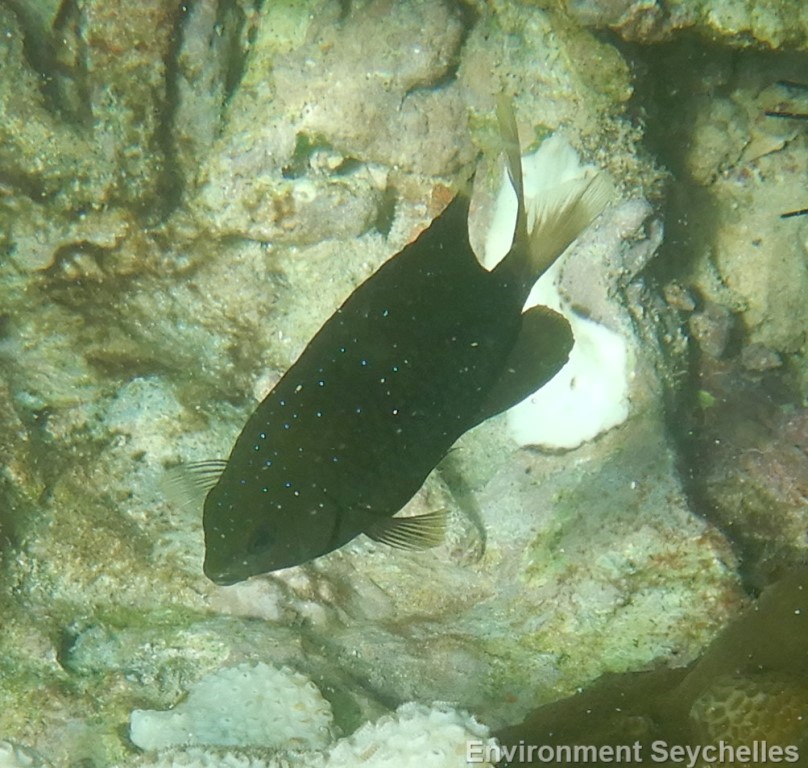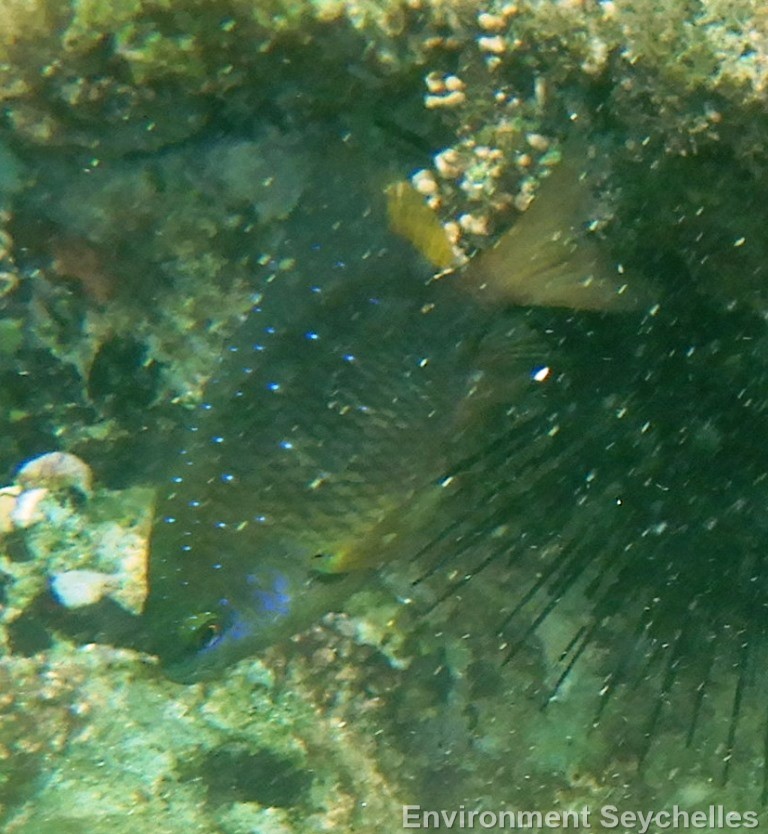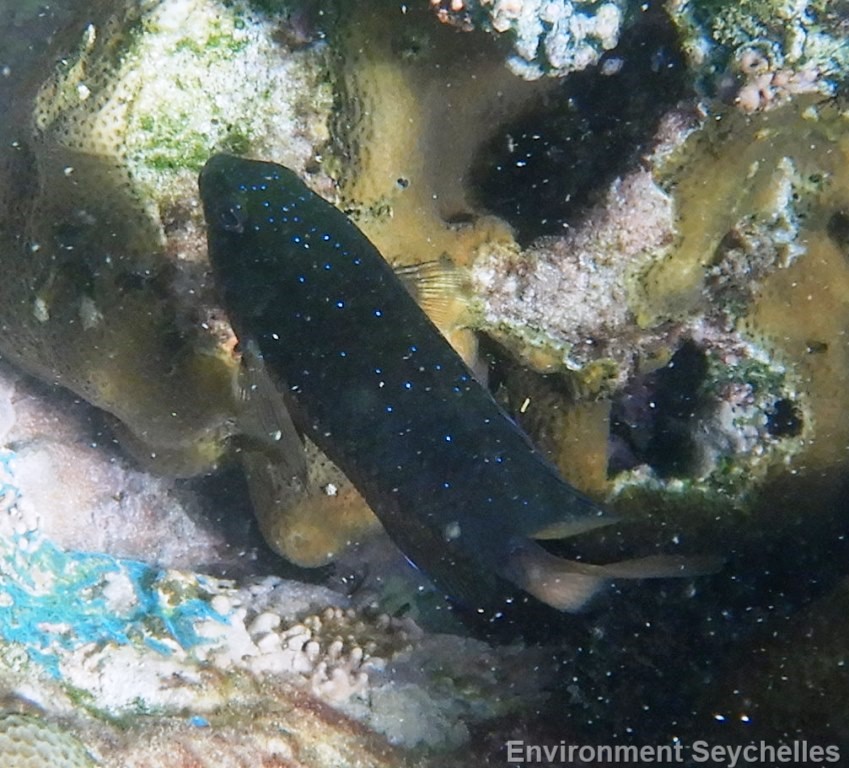Description:
Dorsal spines: 12; Dorsal rays: 16-18; Anal spines: 2; Anal rays: 13-14.
Typical damselfish form.
Colour. Body dark brown to blackish – tending to be slightly paler on breast and lower portion of head. Caudal fin pale pinkish yellow. Yellowish band on posterior soft dorsal fin. Small white spots that show electric blue in the right light dorsolaterally and on dorsal fin forehead and snout. Can also exhibit metallic blue sheen behind eye onto operculum. Black spot at base of pectoral fins. Pectoral fin membranes transparent with dark rays. Iris amber to yellow.
Size:
Maturity: Lm unknown. Range unknown. Max Length: 10cm TL.
Habitat and Ecology:
Inhabits clear lagoon and seaward reefs, in areas with mixed coral and rubble or dead coral rocks (Depth 1-40m, usually 1-12m). Feeds mainly on benthic algae and associated small invertebrates and fish eggs. Oviparous, distinct pairing during breeding. Eggs are demersal and adhere to the substrate. Males guard and aerate the eggs. Diurnal species.
Fishery Status:
This species is not protected or subject to fishery regulations. It may be occasionally caught in net fisheries, but if so this is a rare occurrence.
Notes:
References:
Froese, R. & D. Pauly. Eds. 2020. FishBase. https://www.fishbase.se/summary/5712 (17/05/20).
Smith, M & Heemstra, P Eds. (1999). Smiths’ Sea Fishes Edition 6. Springer-Verlag Berlin Heidelberg 10.1007/978-3-642-82858-4
Citation:
Nevill, J.E.G. (2020). Seychelles Seatizens. Plectroglyphidodon lacrymatus. https://seatizens.sc/species/plectroglyphidodon-lacrymatus-quoy-gaimard-1825/




Thanks a lot for the blog post.Really thank you! Cool.
Major thankies for the post.Really looking forward to read more.
Major thanks for the blog post.Thanks Again. Really Cool.
Im obliged for the blog. Keep writing.
A big thank you for your post.Thanks Again. Fantastic.
Im thankful for the blog.Thanks Again. Really Cool.
I truly appreciate this blog post.Thanks Again. Keep writing.
I really enjoy the blog.Thanks Again. Great.
Really informative article post.Thanks Again.
I value the blog post.Thanks Again. Want more.
Great article post.Really thank you!
Thanks so much for the article post.Thanks Again. Really Cool.
Really enjoyed this article post.Thanks Again. Awesome.
Thanks a lot for the post.Really looking forward to read more. Great.
Thanks so much for the article post.Really thank you!
I appreciate you sharing this post. Fantastic.
A round of applause for your post.Much thanks again. Keep writing.
I really enjoy the blog article.Thanks Again. Awesome.
Really informative blog.Really looking forward to read more.
Thanks-a-mundo for the blog article. Awesome.
Thank you ever so for you post.Thanks Again. Really Cool.
I value the article post.Really looking forward to read more. Will read on…
I think this is a real great blog post.Really thank you! Great.
I really enjoy the post.Thanks Again. Keep writing.
Thank you for your blog post.Really looking forward to read more. Really Cool.
Looking forward to reading more. Great post.Really looking forward to read more. Keep writing.
Fantastic blog.Thanks Again. Keep writing.